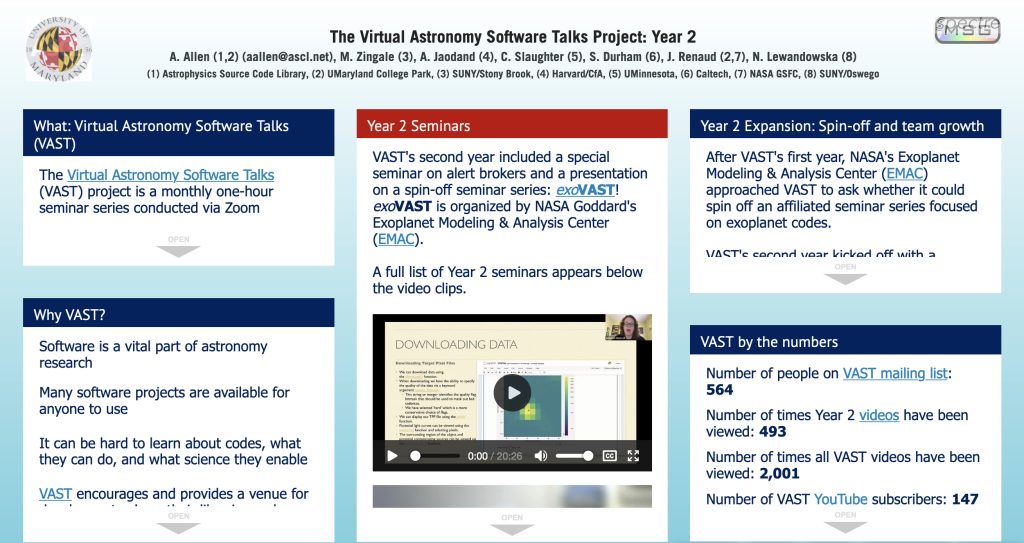Twenty codes were added to the ASCL in May, 2025:
Aeolus: Object-oriented analysis of atmospheric model output
afterglowpy: Compute and fit GRB afterglows
AIRI: Algorithms for computational imaging
BEM: Random forest for exoplanets
CETRA: Cambridge Exoplanet Transit Recovery Algorithm
eclipsoid: Transit models for ellipsoidal planets in Jax
Eureka!: Data reduction and analysis pipeline for JWST and HST time-series observations
Exo-MerCat: Exoplanet Merged Catalog with Virtual Observatory connection
ExoLyn: Multi-species cloud modeling in atmospheric retrieval
Hibridon: Time-independent non-reactive quantum scattering calculations
iSLAT: Interactive Spectral-Line Analysis Tool
Jitter: RV jitter prediction code
jnkepler: Differentiable N-body model for multi-planet systems
NumPyro: Probabilistic programming with NumPy
pyGCG: Python Grism Classification GUI
SCATTERING: Solve the coupled equations for a given scattering system
speclib: Tools for working with stellar spectral libraries
SWIFTGalaxy: Galaxy particle analyzer
tBilby: Transdimensional inference for gravitational-wave astronomy with Bilby
TD-CARMA: Estimates of gravitational lens time delays with flexible CARMA processes


